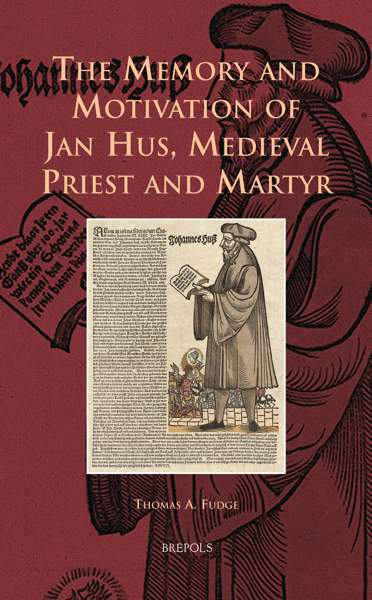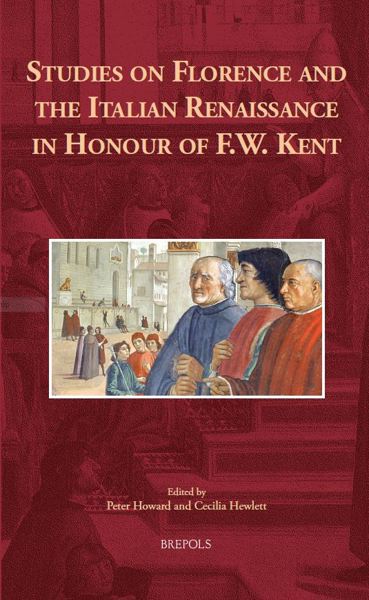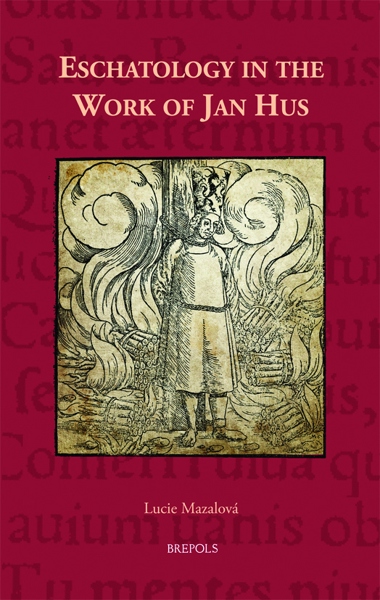
The Sacred and the Secular in Renaissance Florence
Vallombrosan Exorcisms and the Rise of Observant Mendicancy
Justine Walden
- Pages: approx. 400 p.
- Size:156 x 234 mm
- Illustrations:3 tables b/w., 4 maps b/w
- Language(s):English
- Publication Year:2026
- € 110,00 EXCL. VAT RETAIL PRICE
- ISBN: 978-2-503-58549-9
- Hardback
- Forthcoming (Apr/26)
- € 110,00 EXCL. VAT RETAIL PRICE
- ISBN: 978-2-503-58550-5
- E-book
- Forthcoming
*How to pre-order?
This study of the forces which impelled a group of Florentine monks to perform exorcisms opens a window onto fifteenth-century religious practice, the entanglements of politics and religion, and a decisive shift in religious and political life.
Justine Walden is a transnational historian of early modern social, cultural, and religious life (1500-1800). Her work has investigated Italian Catholicism; Jewish-Christian-Muslim relations in the Mediterranean; marginalization and enslavement; African-European interactions in coastal Africa and the Atlantic; antislavery and resistance; constructions of blackness, whiteness, and race, and histories of mentalities, printing, and manuscripts. Her scholarship has been supported by Harvard’s Center for Advanced Studies in the Italian Renaissance, the University of Wisconsin-Madison’s Institute of Research in the Humanities, and Yale University’s MacMillan Center for International and Area Studies.
Seeking to heal people possessed by demons, stave off Lorenzo de’ Medici’s predations, and compete with the meteoric rise of Observant Mendicants — Franciscans and Dominicans — monks known as Vallombrosans performed multiple exorcisms in Florence and its countryside in the latter half of the fifteenth century. The accounts they wrote to publicize their efforts present an unusually lively survey of a little-studied sea change in late medieval religious life. In a religious landscape populated by Mendicant charlatans dressed as John the Baptist, concupiscent clerics, and pompous prelates, the Vallombrosans positioned themselves as committed to the decorous healing of Florentine peasants and nobles while weighing in on contemporary politics and claiming insight into Medici-related affairs such as the recent Pazzi Conspiracy. Yet traditional religious orders like the Vallombrosans and the Benedictines could not match the publicity, popularity, and secular political support garnered by Observant Mendicants in urban areas, and the latter’s ascendance left religion at the end of the fifteenth century looking very different from what it had at its beginning. By the century’s end, Observants predominated in influence, prestige, and patronage in cities across all of Europe. Sanctioning economic gain, addressing worldly moral dilemmas, and moving away from the older monastic focus on the dead and the afterlife, they shifted their focus to contemporary concerns. As over a traditional focus on communal life and monastic healing, Observants inaugurated individualistic forms of piety and fostered alternative forms of lay sociability and healing in the form of confraternities and urban hospitals.
This rich study of the forces which impelled a group of Florentine monks to perform exorcisms opens a kaleidoscopic window onto religious practice, political and religious entanglements, and a decisive shift in religious and political life that transformed the fifteenth century.
Introduction
Vallombrosa and its Historians
Observance and Reform; Political Flattery
Laxity and Reform; Creativity and Vitality
Observant Mendicancy
Country and City: Political Self-Fashioning
Method
Uniqueness and Representation: Historiographies of Exorcism
Publicity, Instrumentality, and Religious Conviction
Historiographies Sacred and Secular
‘Church-State’ Relations at Florence
Threats to Medieval Monasticism
Chapter 1. Exorcisms, Miracles, And Manuscripts: How Vallombrosans found their Calling
Recognizing Demoniacs
Vallombrosans and their Exorcisms
Chapter 2. Lorenzo De’ Medici: Commenda and Observant Reform, Conspiracy and Monastic ‘Decline’
Lorenzo and Commenda
Obeisance and Submission
Chapter 3: Internal Schism: Observance, Organization, and Reputation
Reform and Schism
The Shape of Reform
Undermining the Salvini
Chapter 4. Peasants, Mules, and City-Country Divides
City and Country
The Social Profile of a Rural Monastery
Vallombrosa and the Laity
Conversi
Vallombrosa’s Radical Beginnings
Laypeople, Clerics, and Observant Orthodoxy
Chapter 5. Observant Mendicants: Devotional Change and Religious Rivalry
Observance
Preaching
Theatrics and Spectacularity
Affect and Emulation
Observant Franciscans
Confraternities and Good Deaths
Augustinians
Dominicans
Chapter 6: Florence: Humanism, Fat Prelates, and Political Counsel
Civicism
Humanism
Florentinity and Peasant Culture
Religion at Florence: Traditional Saints
Fat Prelates and Murmuring Seculars: Florence’s Diocesan Church
Medici Devotions
Secular Control of the Countryside
Chapter 7. Restoring Order: Pastoralism, Statebuilding, and Peacemaking
Pastoral Care
Exorcism and Sin; Preaching by Proxy
Confession, Concupiscence, and Female Piety
Biblicism
Domestic Disruption
Discord and Resolution
From Family to Community
Peacemaking, Communal Distress and Violence
Chapter 8. Conclusions, Epilogues, and Legacies
The Politics of Religious Ritual: Lorenzo and Savonarola
Archives and the Future of Early Modern Studies
Appendix: Fifteenth-Century Exorcism Manuscripts
Bibliography
Index




